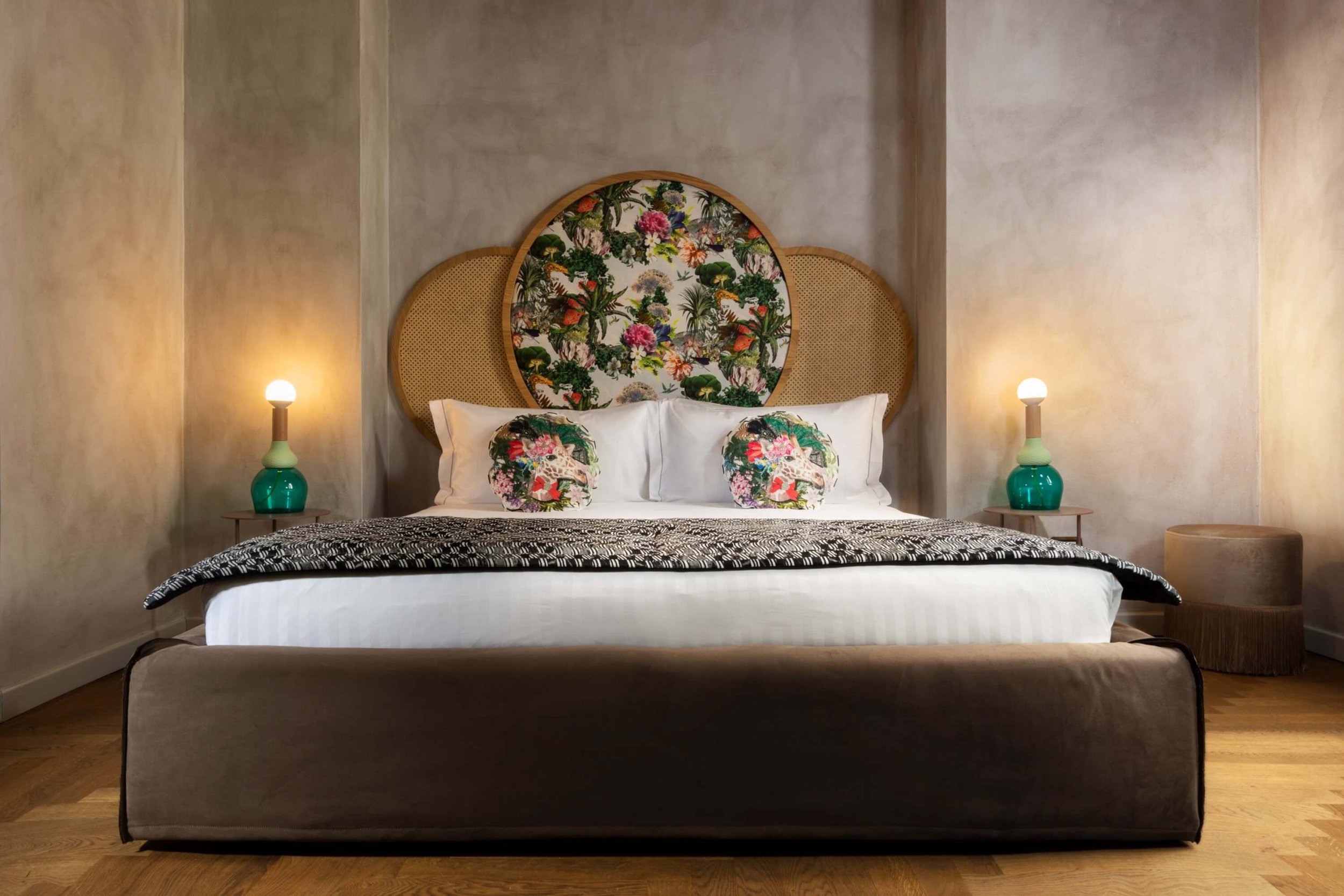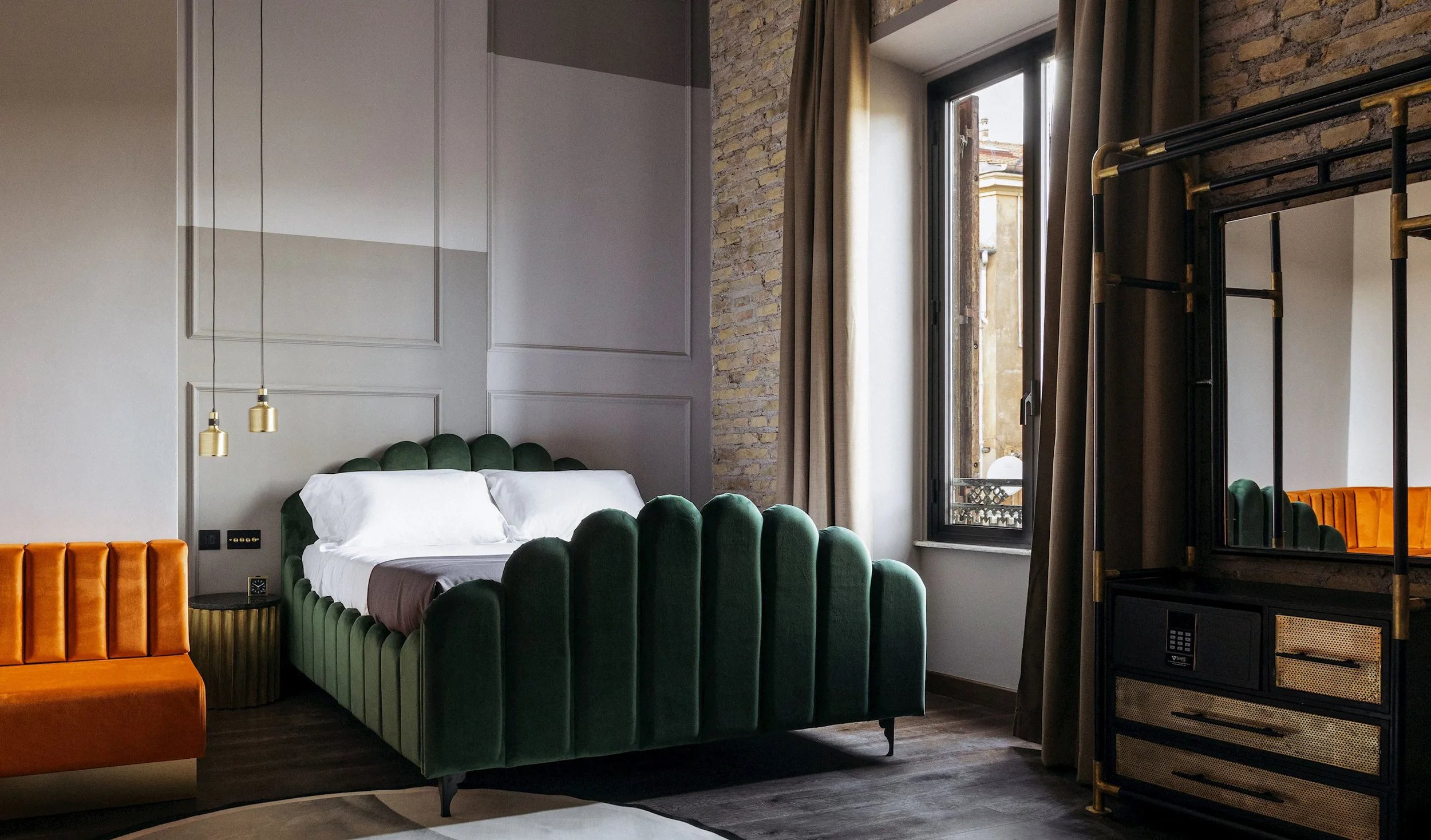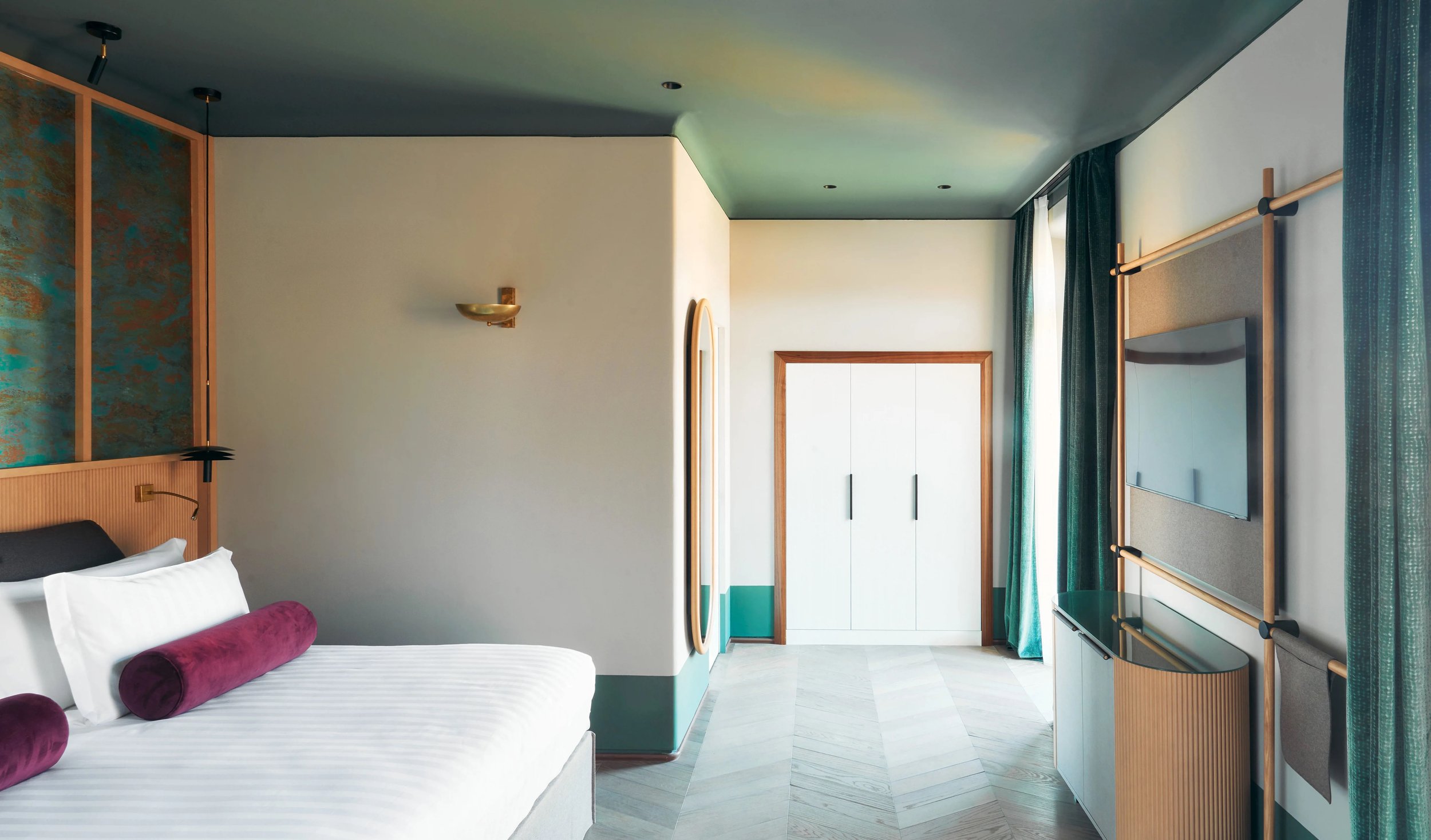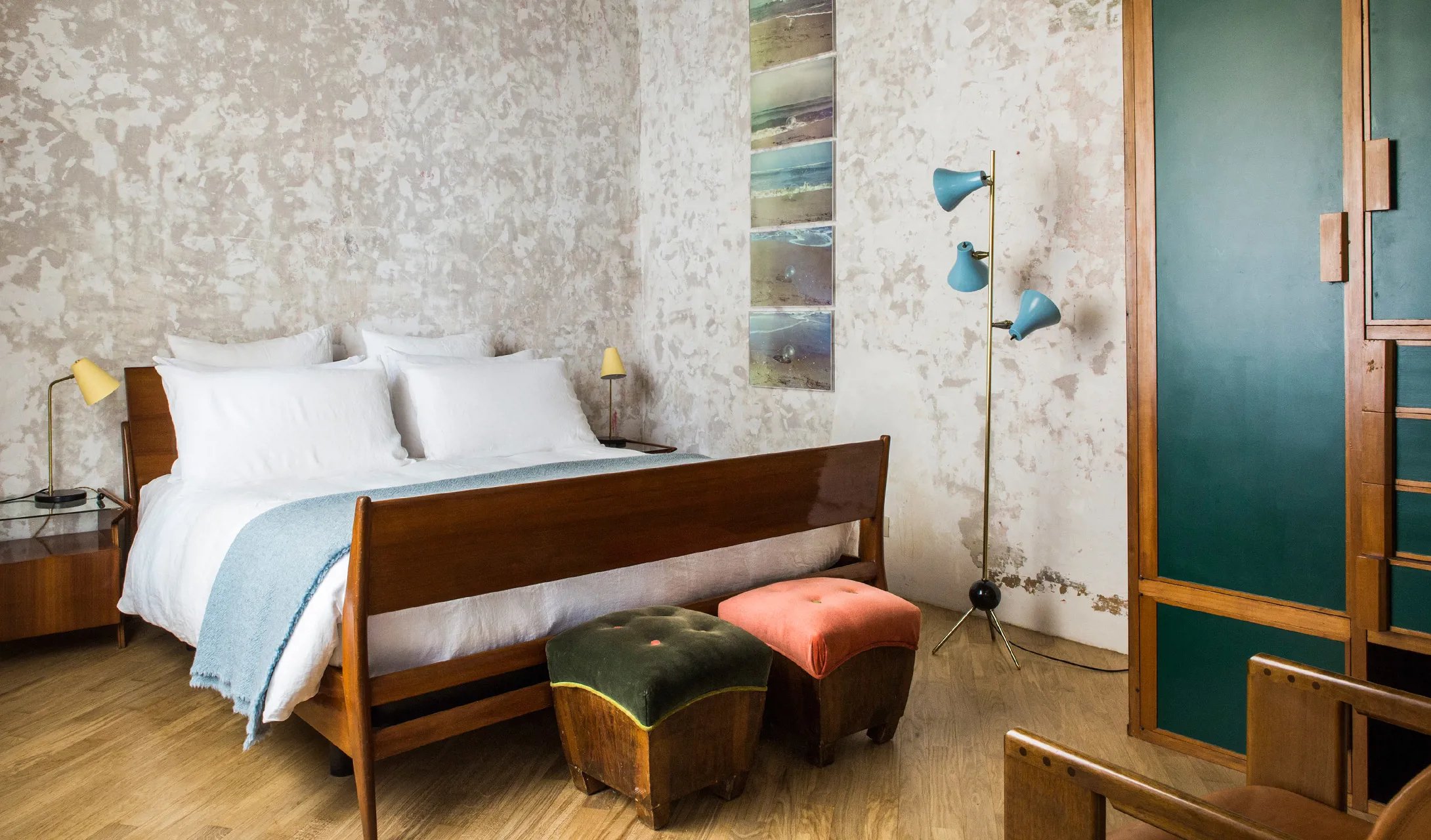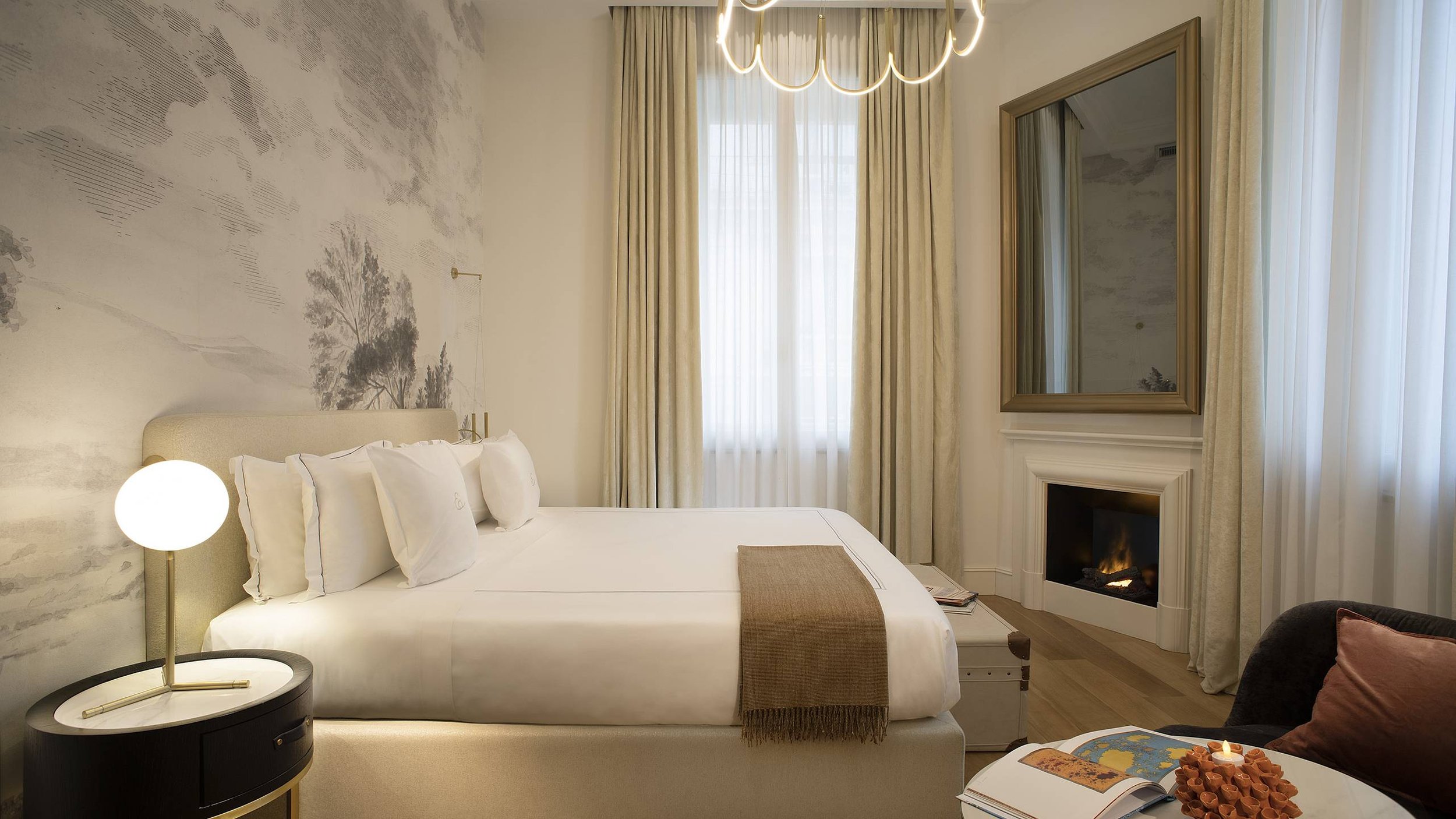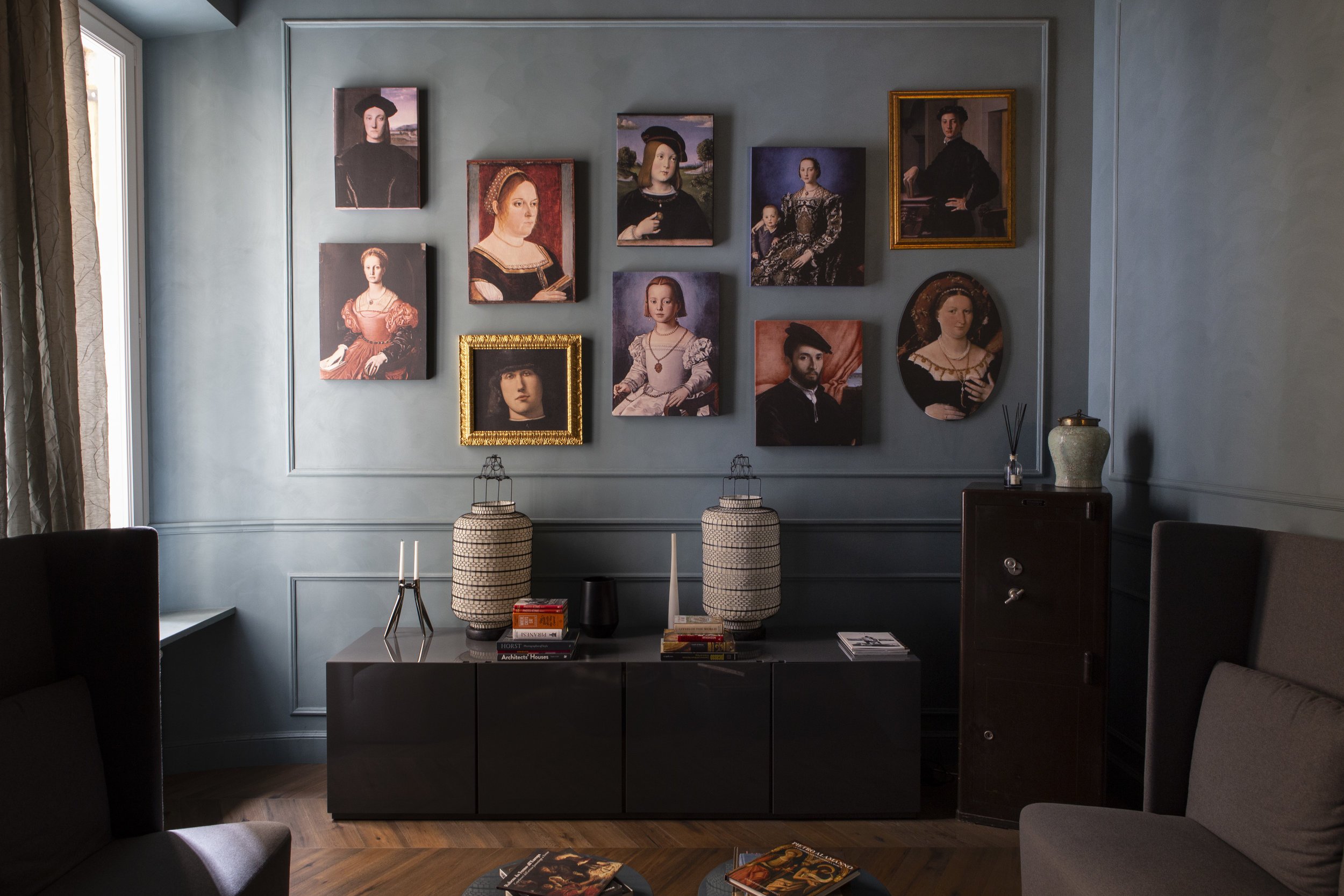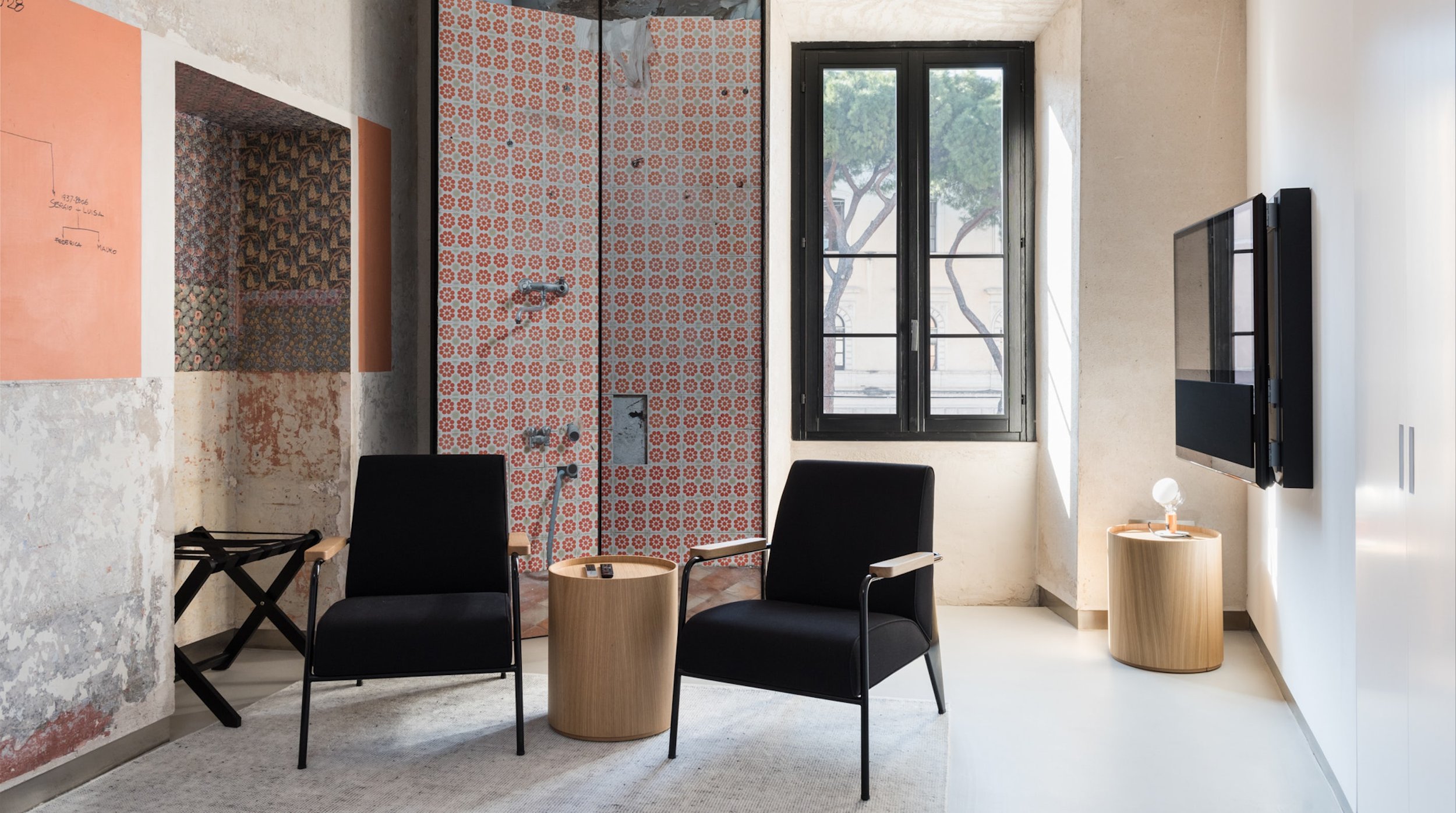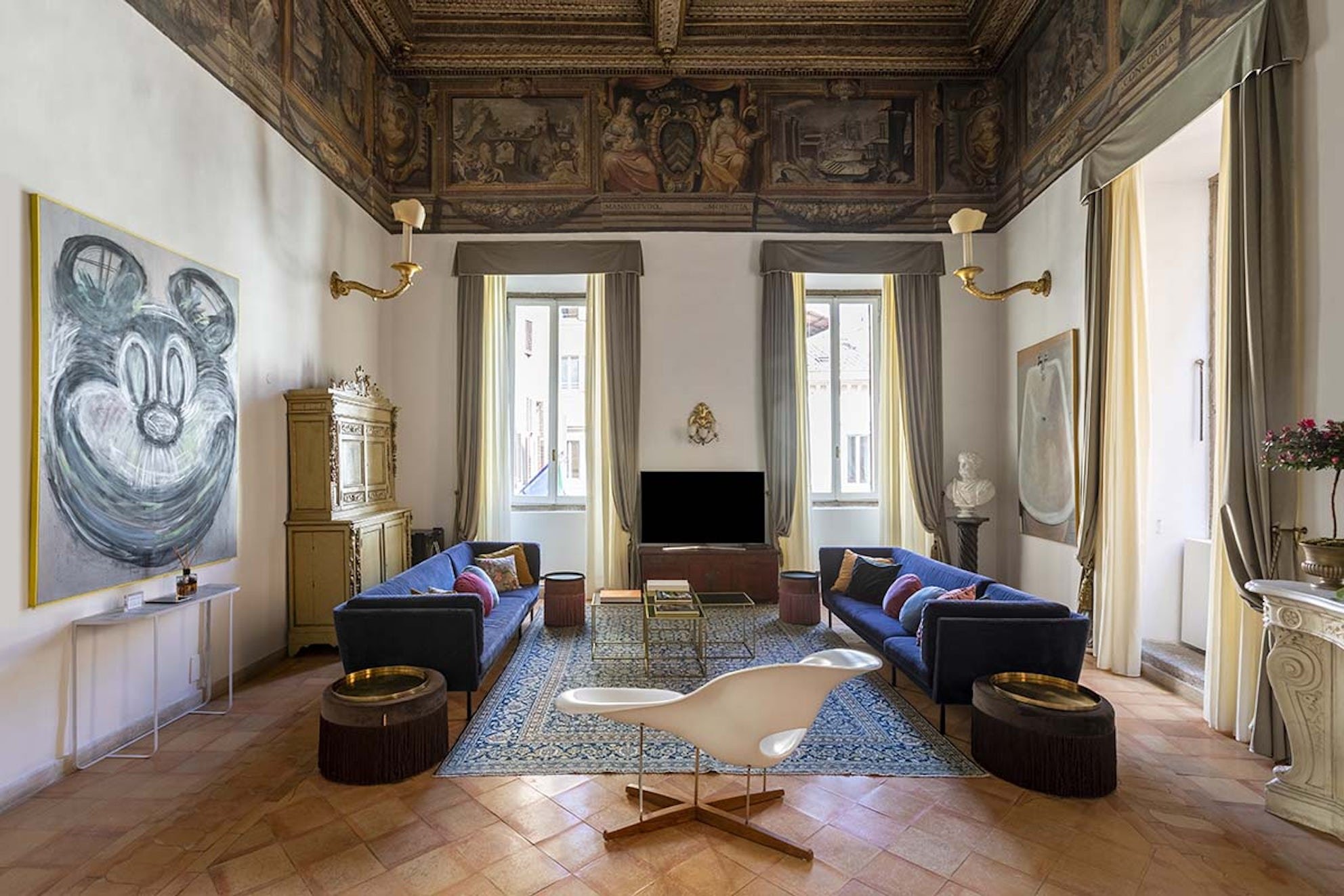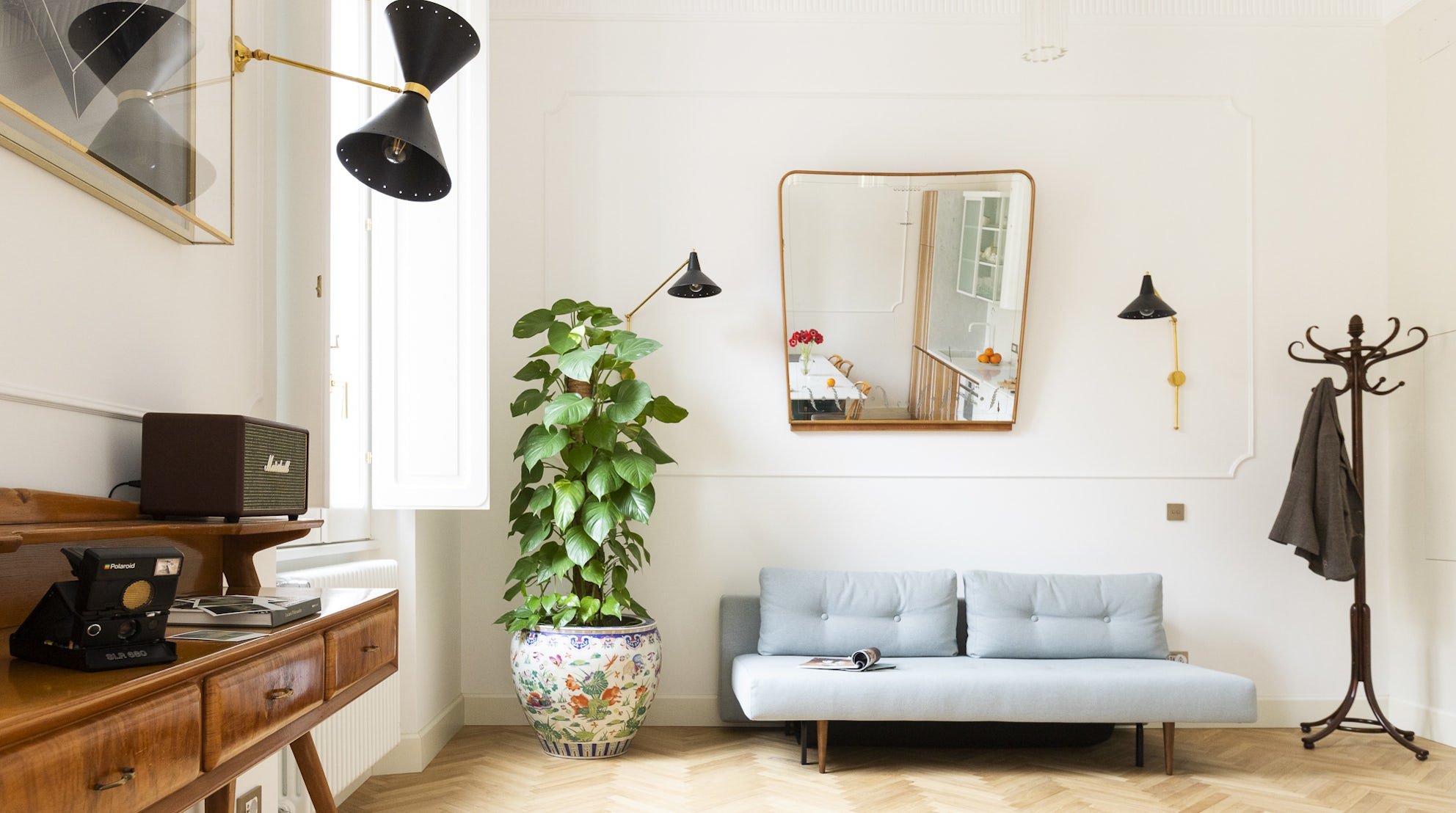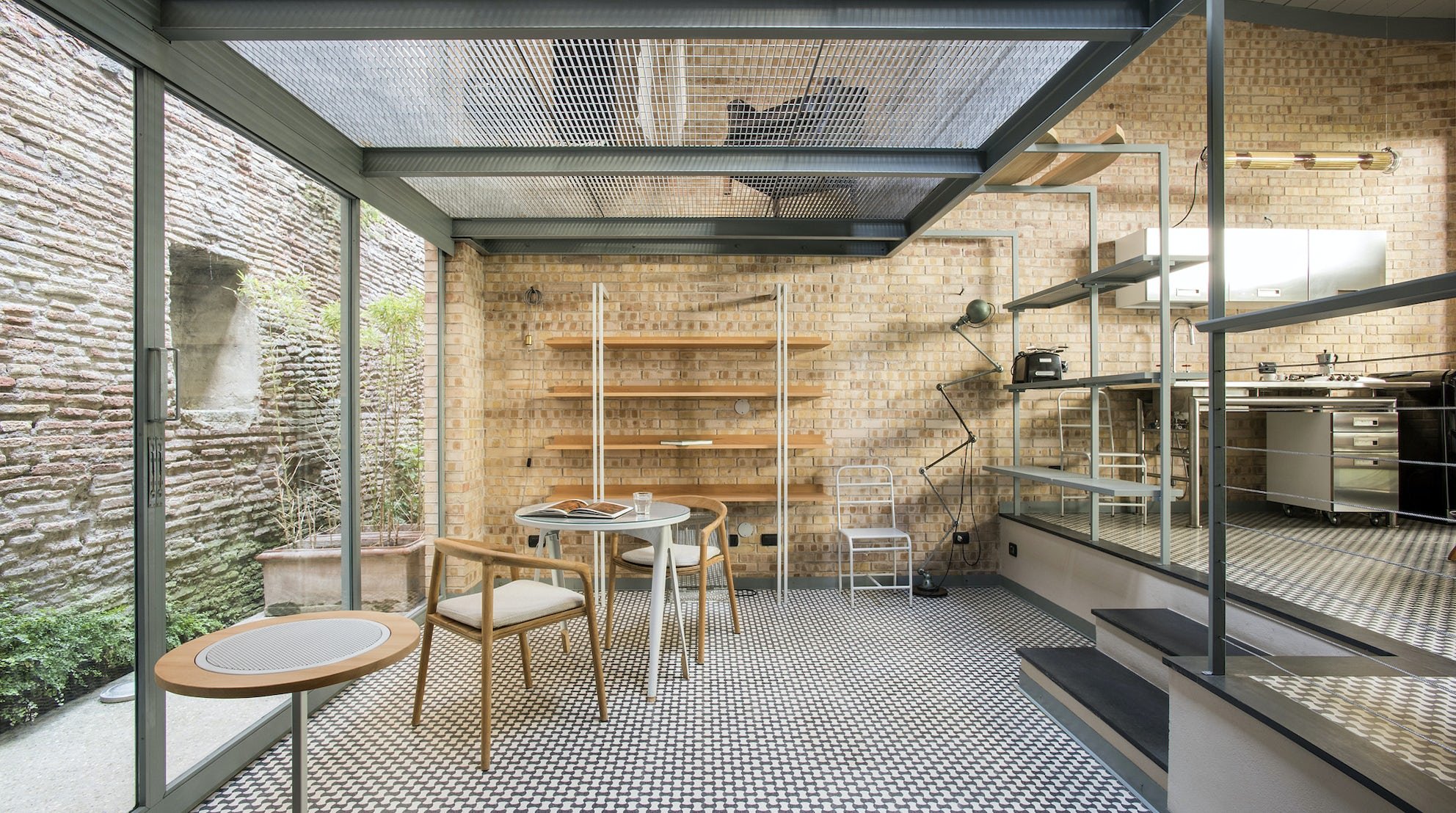Nestled in the ancient Jewish quarter of Modica, a baroque jewel in southeastern Sicily, Casa Talía stands as a sanctuary of peace and beauty. This cluster of restored cottages, meticulously brought to life by Milanese architects Marco Giunta and Viviana Haddad, encircles a hidden garden—an “island within an island.” Each of the eight rooms opens onto this verdant retreat, revealing sweeping views of Modica’s historic rooftops and the majestic Duomo of San Giorgio. Here, history, nature, and culture intertwine, offering travelers a chance to step into a Sicilian story that feels both timeless and deeply personal.
Marco and Viviana stumbled upon Modica in 2001 during an unplanned holiday detour. Exhausted by Milan’s relentless pace, they yearned for a quieter existence. Marco, a design entrepreneur with a knack for turning dreams into reality, and Viviana, a restoration architect with a passion for preserving the past, saw a crumbling ruin and envisioned more than just a holiday home. What started as a personal escape evolved into Casa Talía—a haven for kindred spirits who value authenticity, simplicity, and the slow beauty of life.
“It was love at first sight when we discovered Modica in 2001. We were looking for a special place far from the city’s noise, and we joined our visions—mine as an entrepreneur and Viviana’s as a restoration architect—to create a unique place in the world. Building Casa Talía was a challenge on many levels—we were our own clients and among the first to invest here.”
— Marco Giunta, Owner and Manager
Since its debut in 2005 with just three rooms, Casa Talía has grown organically, like a vine stretching toward the Sicilian sun. The couple poured their expertise into every detail: stone walls and lime plaster echo the island’s traditions, while a revived bamboo roof system—lost to time before their efforts—nods to forgotten craftsmanship. Modern flourishes, like domotics for effortless control of lighting and temperature, made it a trailblazer in Ragusa province. Inside, the rooms blend minimal furnishings with restored vintage treasures—a weathered chair, a retro lamp—lending a nostalgic charm that invites guests to settle in and make the space their own. “It’s a mix of history and modernity,” Marco notes.
The garden is Casa Talía’s beating heart, a secluded courtyard reachable only through the independent rooms, each with its own terrace or balcony. Citrus trees and flowering vines frame the space, where time seems to soften under the Mediterranean sun. Guests linger here, sipping coffee as the morning unfolds or watching the city glow at dusk—a ritual Marco calls “slow living.” By year’s end, this retreat will bloom further with a garden bar, a panoramic pool, a “Home Restaurant” showcasing local flavors, and a “Private SPA”—additions born from four years of dedication.
A LABOR OF LOVE
Building Casa Talía was no small feat. The couple navigated uncharted territory, balancing their dual roles as creators and clients while pioneering investment in a then-overlooked corner of Sicily. Yet the payoff shines through in the community it’s fostered: a global mix of professionals who find luxury in the quiet details—stone textures, the scent of orange blossoms, the stillness. Some fall so deeply for the area that they buy homes nearby, enlisting Marco and Viviana’s architectural talents to shape their own Sicilian dreams.
“There’s a natural selection of wonderful people who connect with this place—travelers from around the world who see luxury in simplicity and attention to detail, making every stay a shared celebration of beauty.”
— Marco Giunta, Owner and Manager
SICILY’S HIDDEN TREASURES
Modica sits at the edge of Val di Noto’s wonders, a region brimming with riches just an hour’s drive away. Marco points to baroque towns like Scicli, Noto, and Syracuse, where art and history spill from every corner; nature havens like Vendicari’s wetlands and the serene Avola lakes; and wild beaches like Sampieri and Porto Ulisse, where the sea meets golden sand. For a taste of Sicily, he champions Arianna Occhipinti’s soulful wines and Fidone’s sun-kissed olive oil. Dining ranges from the refined—Michelin-starred Duomo—to the rustic, with seafood at A Valata and street-side bites at Piccolo Bar, which Marco dubs “my favorite.”
BEYOND CASA TALÍA
Marco’s love for Sicily extends beyond Modica. He recommends “Locanda Milia” near Mount Etna, where volcanic landscapes captivate; “Mandranova” in Palma di Monte Chiaro, a rustic gem steeped in elegance; and his own seafront villas near Cefalù, one with private steps to the waves (bookable via Casa Talía’s site). Renting a car is a must—Catania’s airport is 75 minutes away, Comiso a quick 45—since public transport can’t keep up with Sicily’s call to explore.
“Visiting this region is wonderful year-round—this island rewards the curious with its beauty and hidden treasures.”
— Marco Giunta, Owner and Manager
AN INVITATION TO PAUSE
The name Casa Talía, meaning “look, admire!” in Sicilian, is a gentle command to stop and take it all in—the panorama, the heritage, the soul of the place. Whether tracing Modica’s ancient streets or unwinding in the garden, this is an oasis where time bends to the sun’s rhythm, the wind’s sigh, and the horizon’s shifting hues. For Marco and Viviana, Casa Talía is more than a property—it’s a living dream, a gift they’re eager to share with those who seek its quiet magic.










